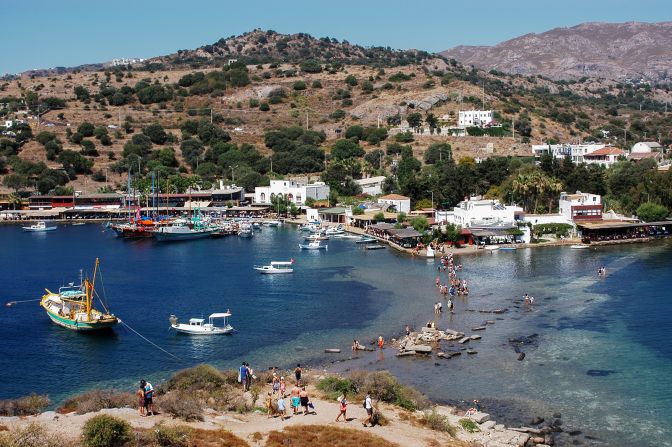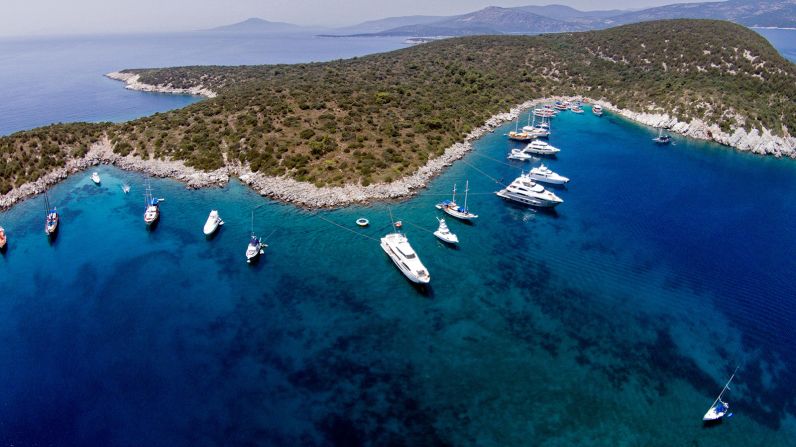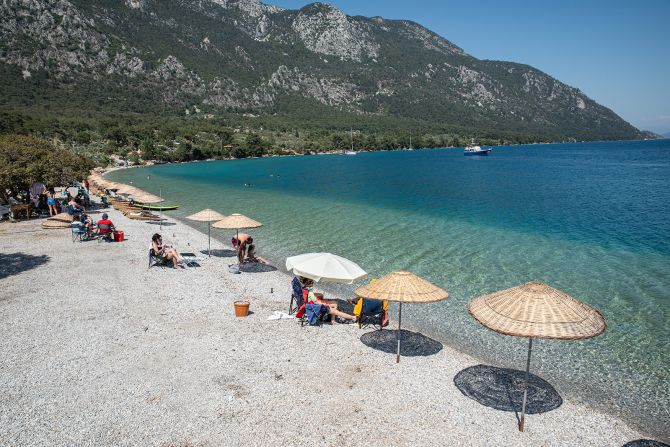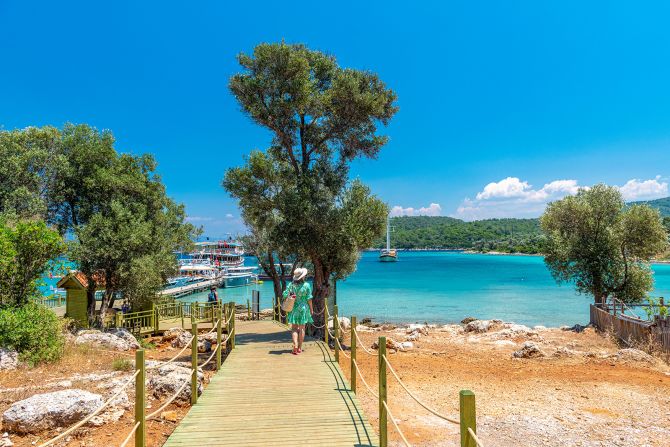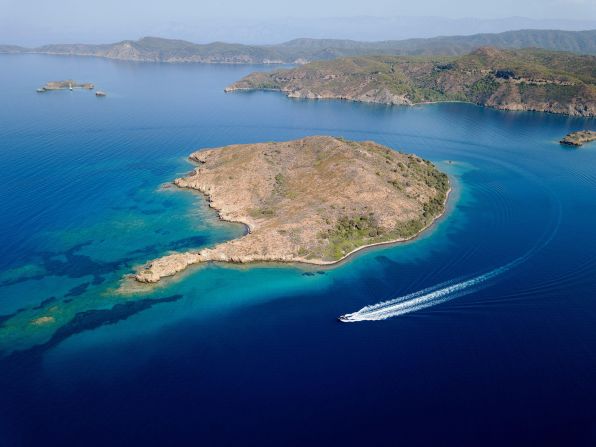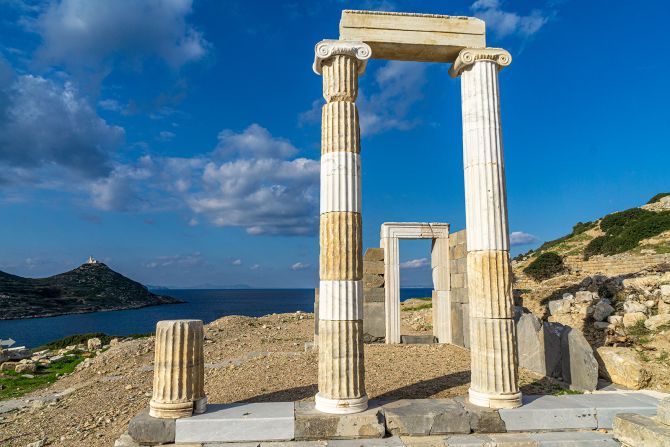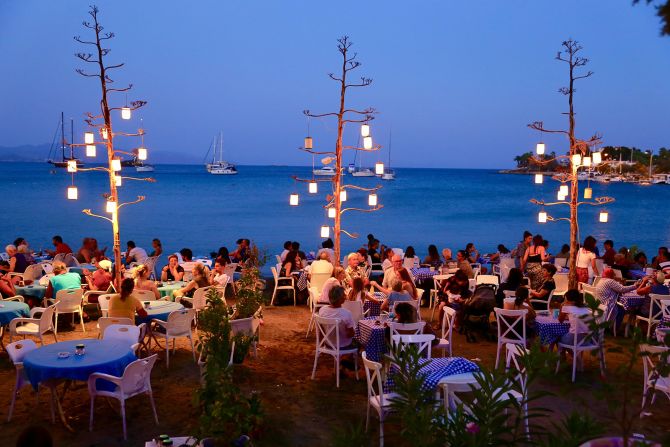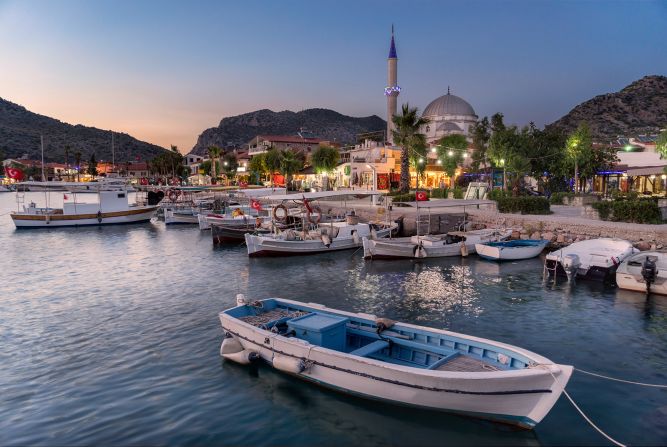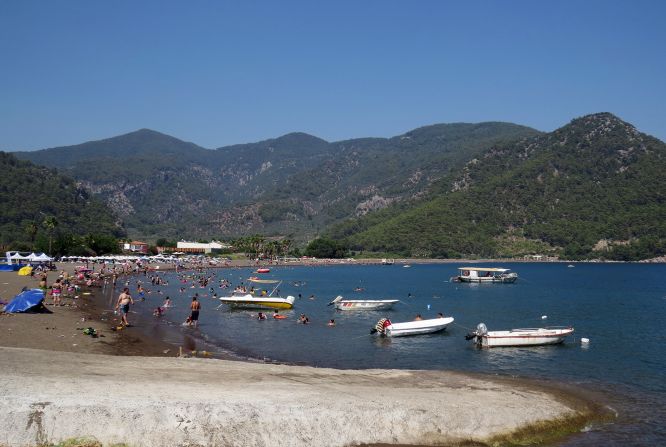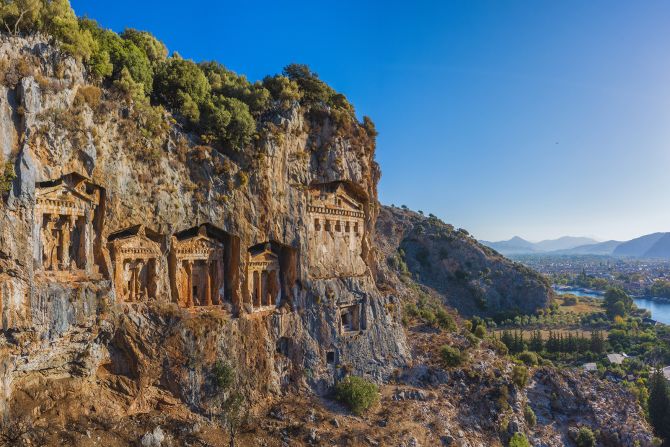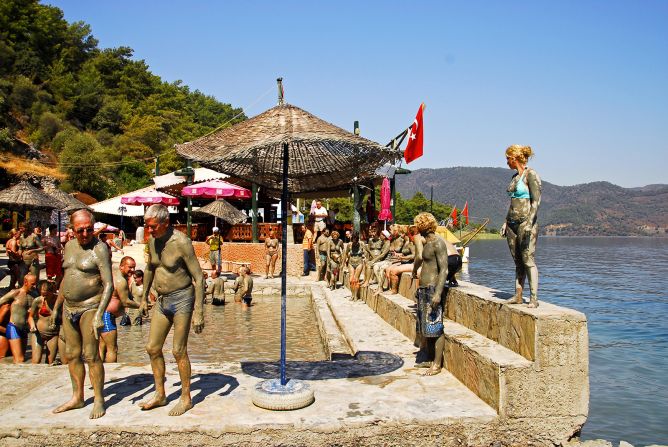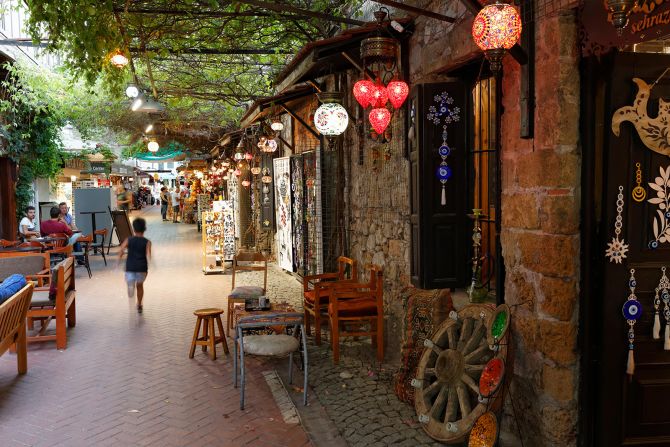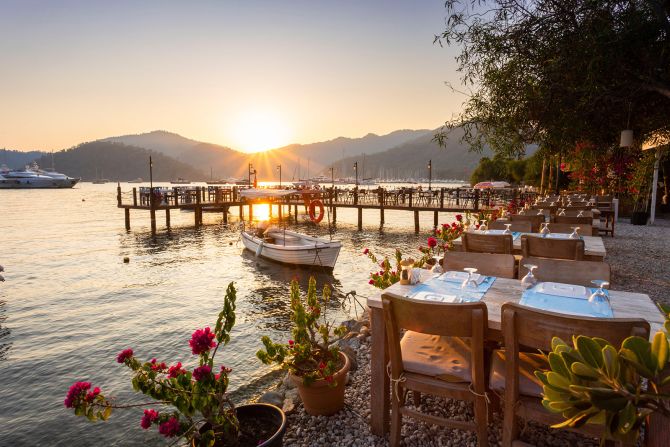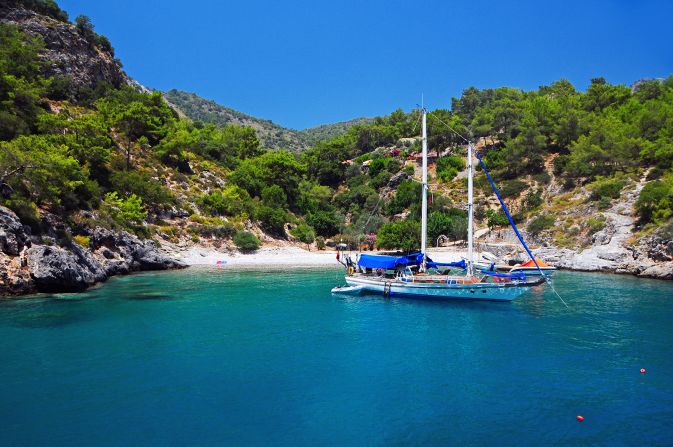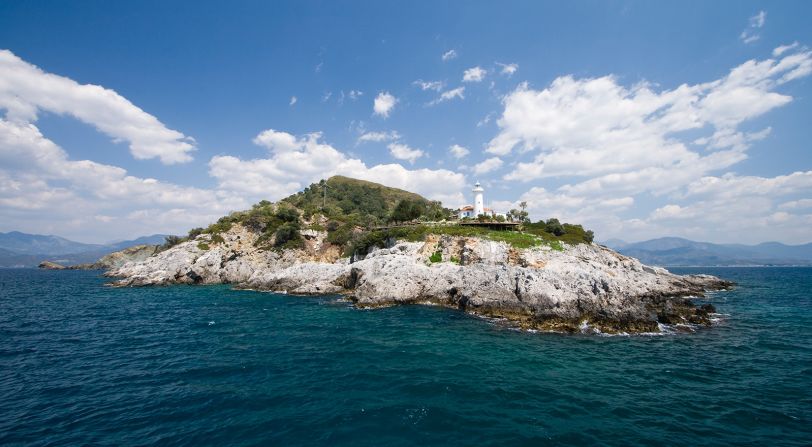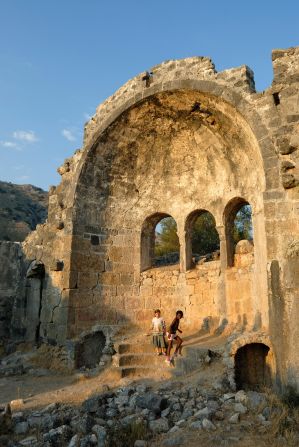Editor’s Note: This CNN Travel series is, or was, sponsored by the country it highlights. CNN retains full editorial control over subject matter, reporting and frequency of the articles and videos within the sponsorship, in compliance with our policy.
Fringed by mountains, Turkey’s southern Aegean coast is dotted with lively resorts and quaint quays in sleepy villages, pine-backed beaches, and translucent bays studded with ancient ruins.
With summer meltemi winds filling your sails, it’s one of the world’s best regions for a holiday afloat. You can spend your days exploring secluded swimming spots, enjoying long lunches on vine-covered terraces lapped by clear waters, and your nights mooring up under the stars in magical coves, many of which are only accessible by boat.
So whether you’re a seasoned yachtie or happier lounging on the deck of a luxury gullet (Turkey’s traditional-style motor sailing yachts) or even just a traveler keen on day trips on the water, here are some spots worth checking out on Turkey’s Turquoise Coast.
Gulf of Gökova
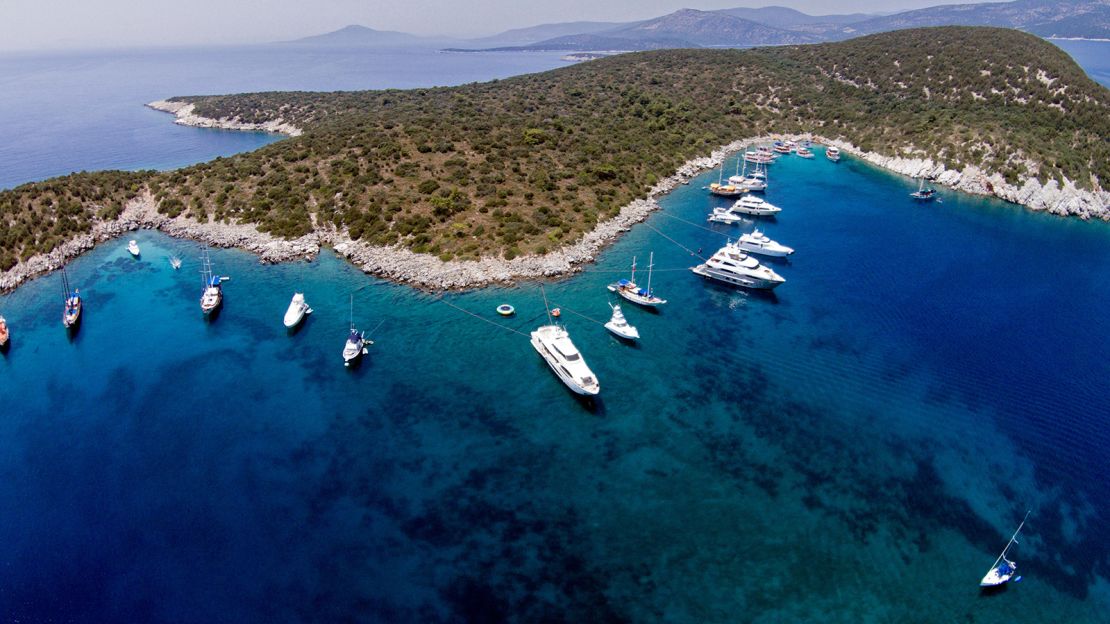
Starting from the increasingly stylish fishing town of Yalıkavak on the northwest tip of the Bodrum peninsula (and its ultra-modern marina), head south to Gümüşlük.
The quay of this small, sheltered bay opposite the Greek island of Kalymnos is lined with restaurants offering mezes, fresh fish, octopus, calamari and Turkish staples such as lahmacun (Turkish pizza), kofte and kebabs, all washed down with raki, the national drink.
Mimoza is an upmarket option with homemade lanterns hanging from the trees and whitewashed rafters, while Fenerci, overlooking little Tavşan Ada (Rabbit Island) in the entrance to the bay, has been serving local seafood since 1979.
Sailing further south, you enter the Gulf of Gökova, which resembles the open mouth of a crocodile – with the Datça Peninsula as the lower jaw and the Greek island of Kos about to be gobbled up.
The 60-mile gulf is home to cosmopolitan Bodrum, dubbed the “St. Tropez of Turkey,” but there are plentiful nooks and crannies to discover away from the crowds.
East of Bodrum, Orak island is a good spot for diving and snorkeling – the water is so clear it looks like it could have been piped from the Maldives. Further east is sleepy Çökertme, a fishing village and carpet-weaving community backed by mountains and swathed in pine, almond and olive trees.
Jetties jut into the emerald water enticing boat crews to dine at the small tavernas, including Captain Ibrahim’s and Rosemary Restaurant. Rooms are available at both.
Continuing further east into the gulf is hidden-away Akbük Limani, a serene east-facing bay with a pebbly beach lapped by teal water. It’s the perfect place for a pine-scented dip at dawn, followed by a breakfast onshore of thick coffee or çay, Turkish tea served in tulip-shaped glasses.
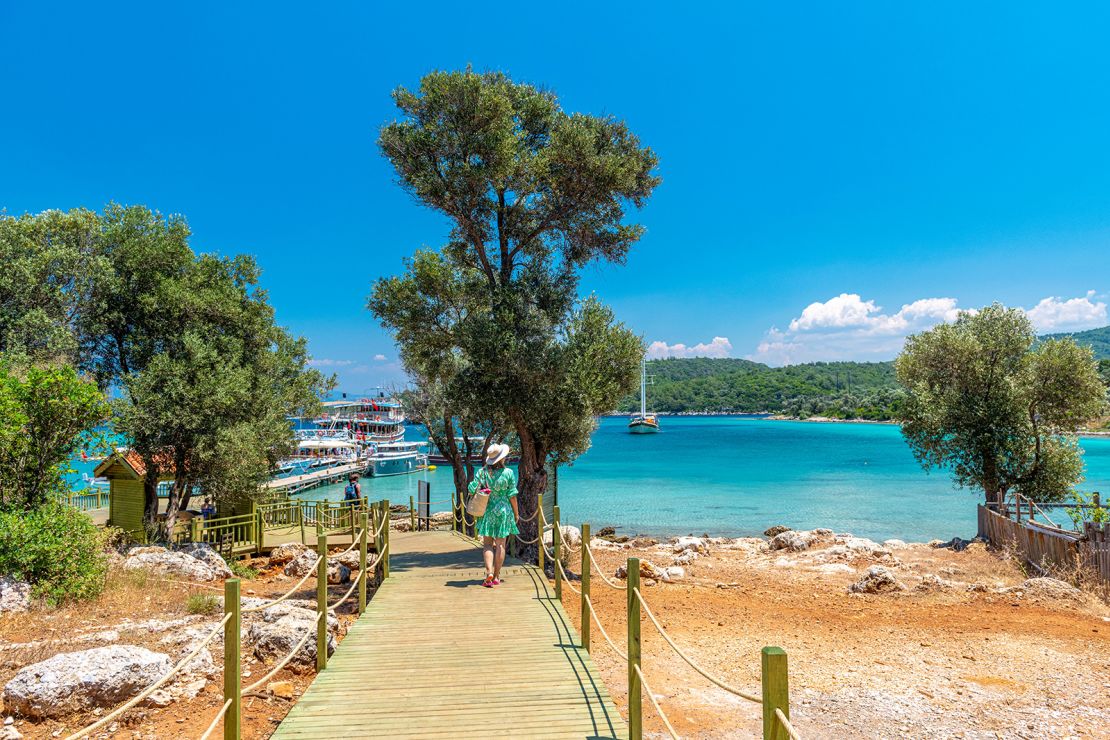
On the south side of the gulf, Sedir Island is home to Cleopatra Beach where, according to legend, the Egyptian queen and her beau Mark Antony swam. The romantic Roman is said to have imported the sand here from North Africa for her, and experts have confirmed it’s not typical of the region. Ruins of the ancient city of Kedrai (“Cedar Tree”) – which dates back to the sixth century BCE – add to the timeless ambiance.
To the southwest lies Değirmen Bükü, or English Harbour, so named because British naval vessels hid here during World War II. It’s another tranquil spot with several smaller coves to explore and a wooden jetty to reach a couple of rustic restaurants shaded by trees.
Further west, the Yedi Adalari (“Seven Islands”) are a string of uninhabited islets and reefs offering sublime swimming and snorkeling with a brilliant backdrop of blue and green from the pine-clad slopes.
On the southwestern tip of the gulf, at the end of the Datça Peninsula, lies the ancient Greek city of Knidos, once a significant trading port. You can stroll among the ruins of temples, including the Temple of Aphrodite, two theaters, a marketplace and old harbor.
Its sheltered aquamarine bay is an enduring setting for evening cocktails onboard, with views over to the south shore of Kos. Meanwhile, Knidos Restaurant is the solitary taverna at this meeting point of the Aegean and the Mediterranean.
Gulf of Hisarönü
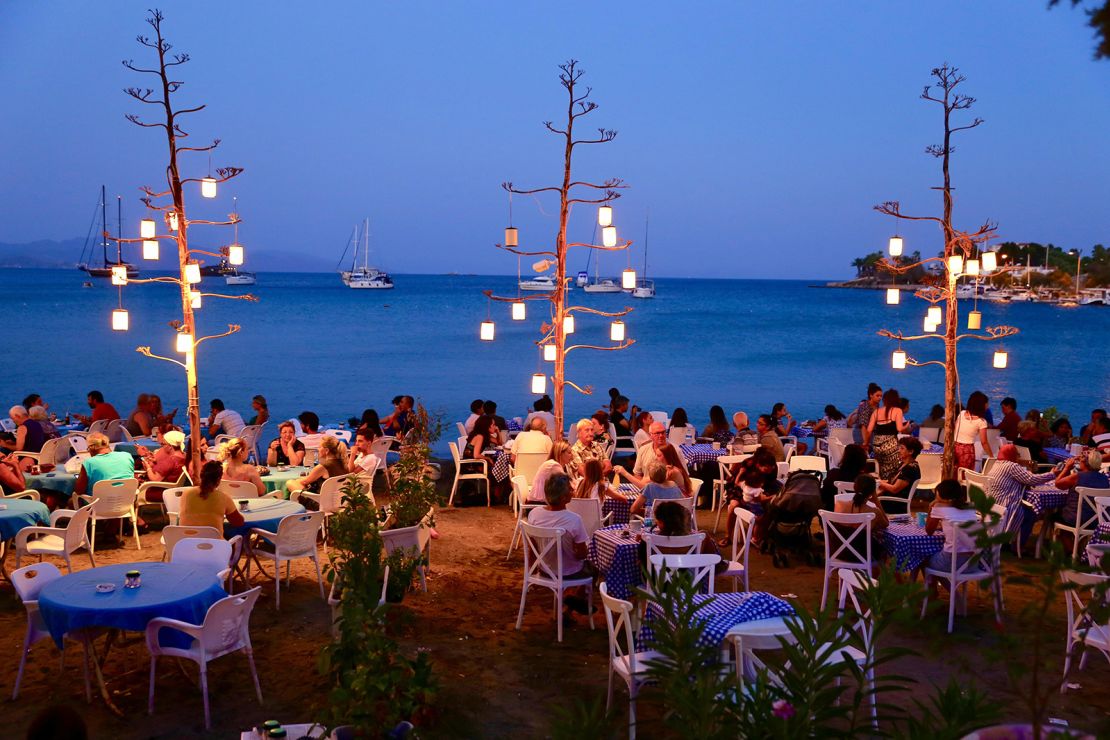
Like the open pincers of a crab about to seize the Greek isle of Simi, the Hisarönü Gulf to the south of the Gulf of Gökova is bordered by an ageless landscape of rocky outcrops, hillsides, coves and crumbling ruins – accompanied by wild goats and the scents of thyme, rosemary, sage and pine.
The main draw is cutesy Datça, with its buzzy harborfront bars and restaurants. Its enchanting old town (Eski Datça) has been rejuvenated in recent decades and is a hive of cobbled streets, bougainvillea-covered cafes and chic shops selling local arts and crafts. A few streets back from the water, restaurant Eski Meyhane is a good spot – the grilled octopus is a specialty.
Across the gulf on its own peninsula is pretty waterfront town Bozburun, known for its thyme honey, sponge fishing and traditional boat builders.
Sleepy Selimiye, with its Byzantine castle, and Orhaniye, with its finger of sand stretching into the bay at Kizkumu beach, are other attractive spots in this remote and rugged corner of Turkey.
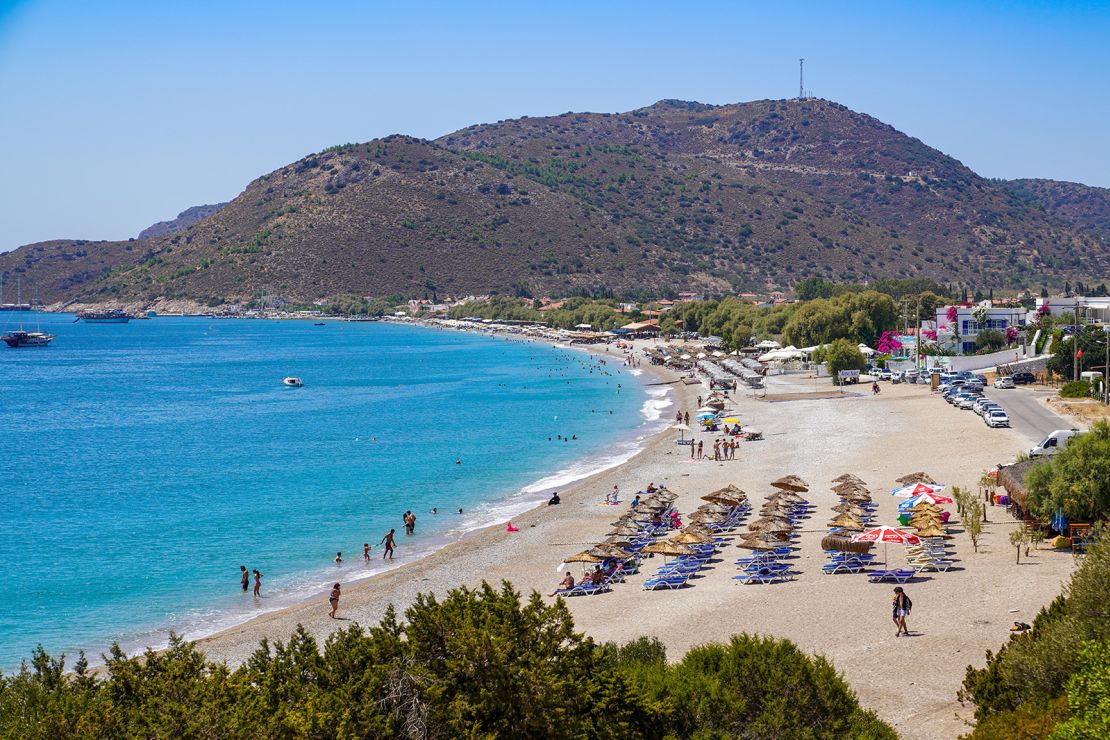
There are plentiful bays to hole up in for cooling dips or nights afloat, such as Dirsek Bükü, a cozy inlet only accessible by boat with a lone taverna serving calamari, homemade bread, grilled meat and fresh fish.
Aquarium Bay, Bençik Bay and the coves around Kizil Island all offer peaceful stops with water that wheels through the whole palette of blue, as well as pine, almond and olive trees ashore.
With their wide arcs of pebble beach, Palamut Bükü and Kargı Koyu are popular spots for lounging and swimming between Knidos and Datça.
Marmaris to Göcek
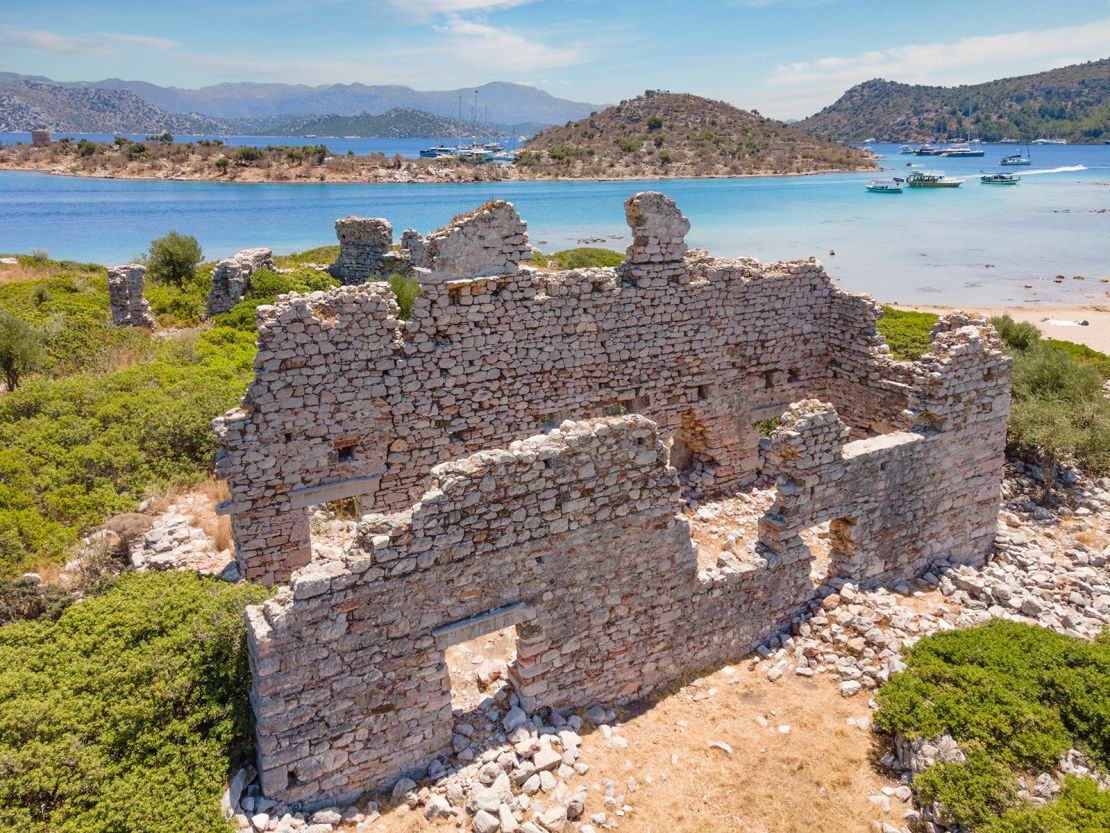
Rounding the southern tip of the gulf and sailing a short distance east you reach the attractive anchorage of Bozuk Bükü guarded by the crumbling ruins of a Hellenic castle.
The remains of the ancient city of Loryma can also be traced on the scrubby slopes surrounding the bay.
Sailor’s House is one of a couple of restaurants on the shore, with mezes, meat and seafood served yards from the lapping water.
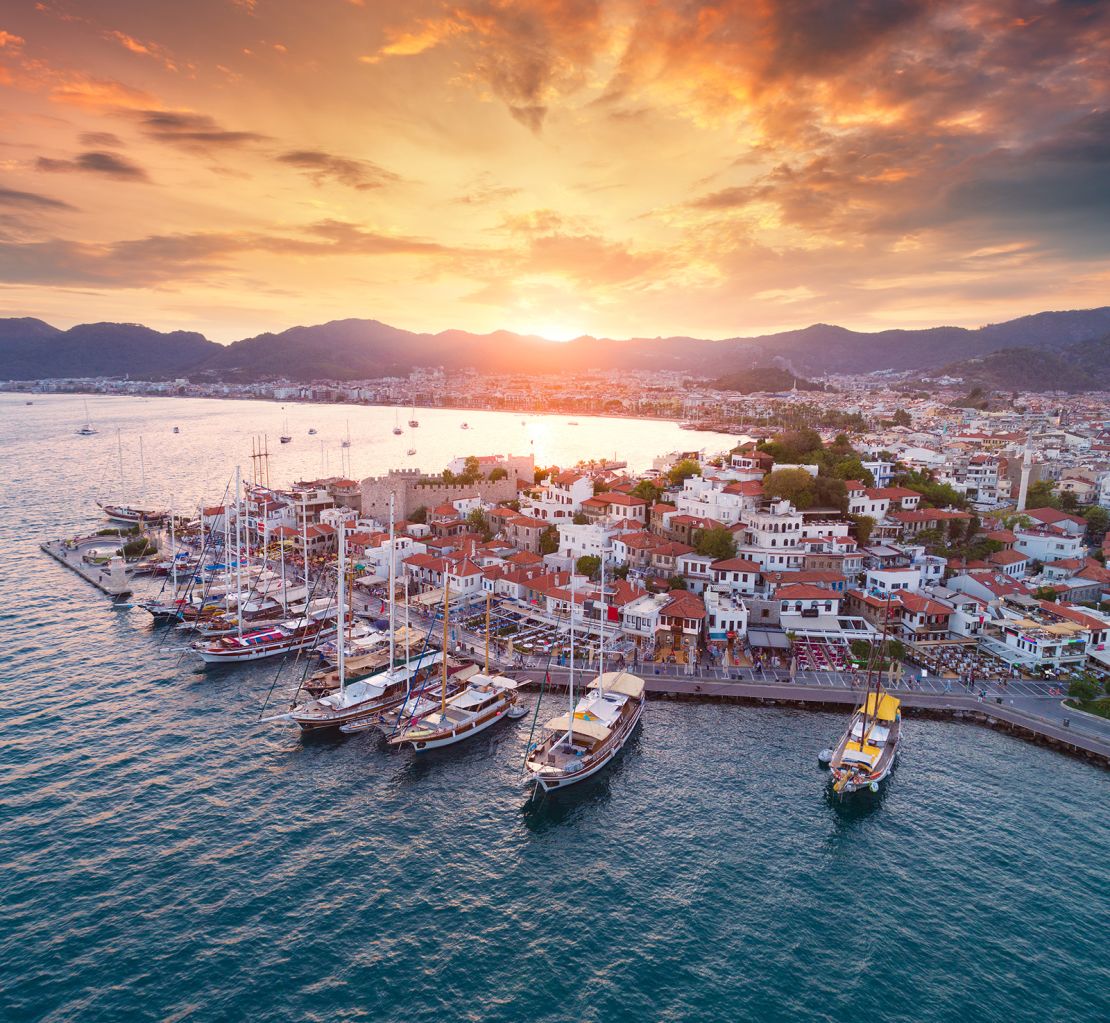
A short hop east, Serçe Limani is a peaceful inlet with a simple taverna, while Gerbekse, just south of Çiftlik, is a similarly secret hideaway with ruins of an ancient church and beckoning blue water, only accessible by boat.
Tucked into its own pine-backed gulf to the north of Çiftlik, the lively resort of Marmaris offers all manner of life. Several hours east of Marmaris is the picturesque cove of Ekinçik, where you’ll find the swish My Marina restaurant, a more upmarket affair than many in the region.
From here, you can visit the ancient Carian town of Kaunos, indulge in age-defying mud baths up the Dalyan river or watch the loggerhead turtles nesting at the protected İztuzu Beach.
Gulf of Fethiye
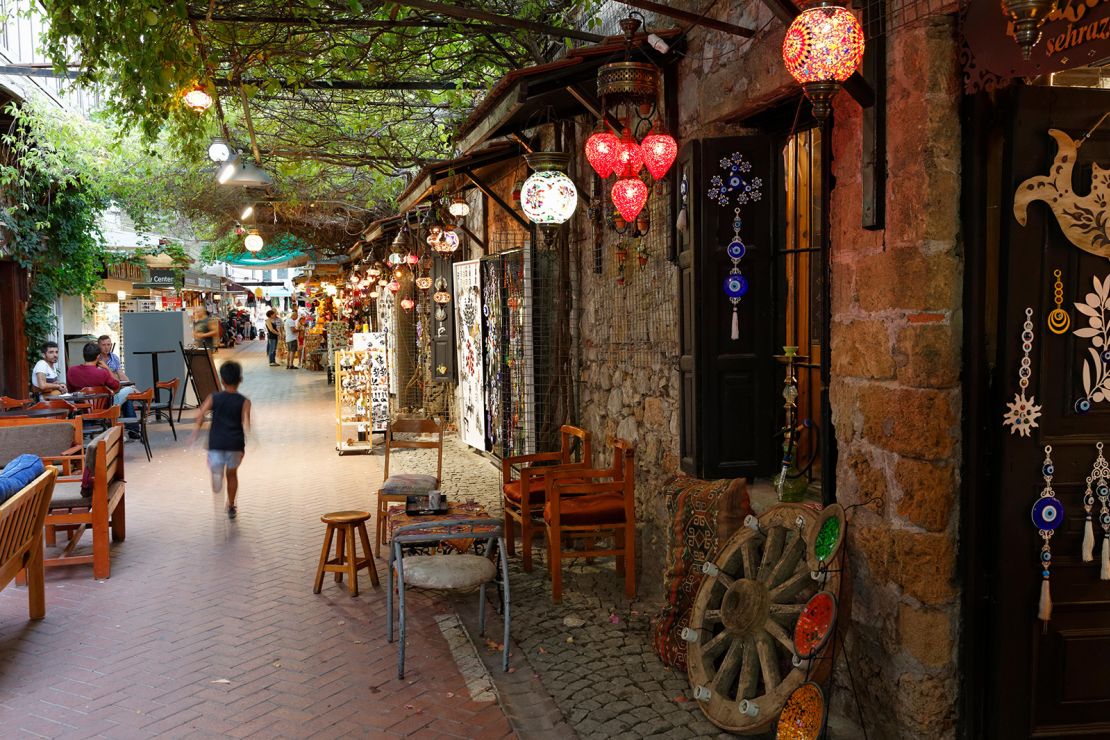
Backed by mountains and fringed by thick pine forest, the compact Gulf of Fethiye is home to 12 islands and innumerable coves and bays.
Fethiye, once the ancient city of Telmessos and now one end of the 335-mile Lycian Way hike, is a busy harbor in its own protected bay. For a good wander, head to the bazaar, browsing stalls selling spices, fruit and vegetables, cheese, textiles, bags and other handmade goods. You can refuel at cafe Baba Dondurma, known for its ice cream.
Göcek, a pretty waterfront town, is the gulf’s main yachting center. It’s a laid-back place for strolling, shopping, eating and drinking and taking a boat out to the bays and islands, with the odd superyacht appearance getting tongues wagging.
Hotel D-Resort is a stylish spot with several gourmet restaurants, including Q Lounge, serving Japanese cuisine infused with local and Peruvian flavours.
Lotis Kitchen is a good option on the waterfront, while for cheaper eats Kebab Hospital is a fun joint serving a range of skewered treats with flatbreads and Turkish sides.
Of those 12 islands, Tersane, once the dockyard for the Ottoman navy, is the largest. It’s an attractive spot with a cozy harbor, lone taverna, rocky ruins – and goats.
Tomb Bay, Fathom Bay, Ruin Bay and Wall Bay (sometimes known as Cleopatra’s Bath), are a few of the anchorages around the islands, some with simple restaurants ashore.
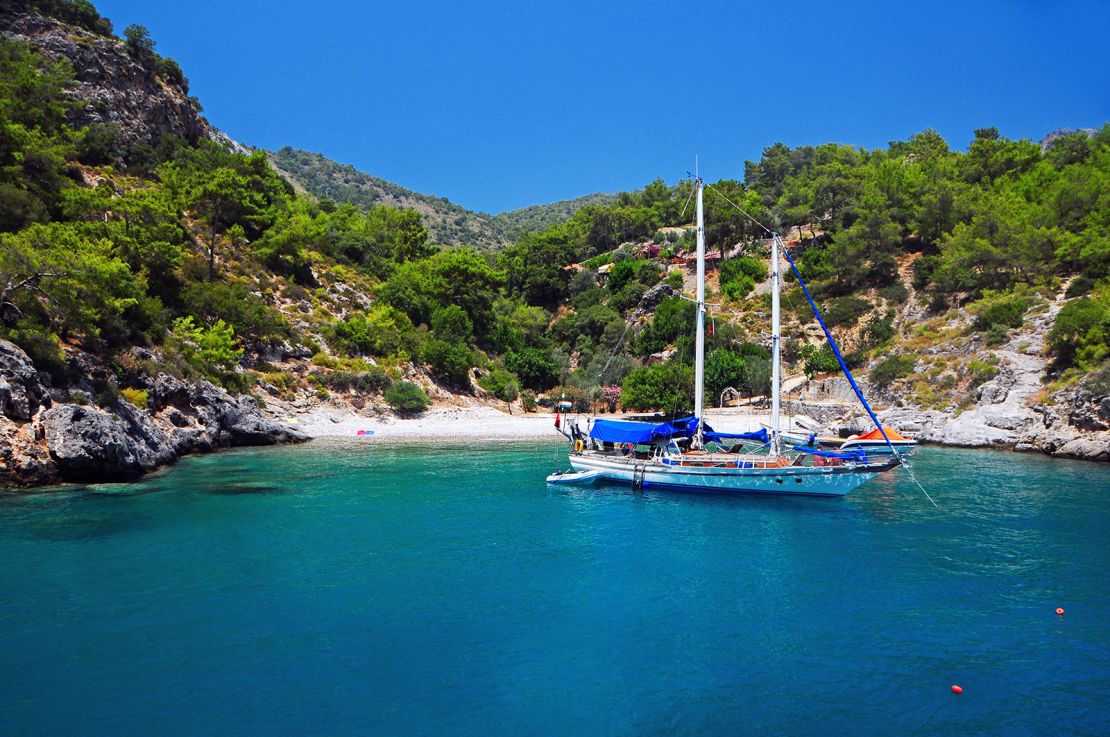
Little Kapi Creek, on the inside of the peninsula at the southwest tip of the gulf, is a tucked-away spot with olive groves, crumbling ruins and old orchards. It’s home to the atmospheric Gobun restaurant, serving Turkish classics such as lamb tandir. The real world is a million miles away here.
To the south of Fethiye is Bestas Limani, more commonly known as Cold Water Bay because of the cold springs that flow from the mountains. When taking a dip here, you’ll notice the top layer of water is distinctly colder than lower down. A short walk away is the ghost town of Kayaköy, abandoned in 1923 when the Treaty of Lausanne forced the Greek residents out.
Nearby, Gemiler Island is thought to house the tomb of St. Nicholas – the patron saint of sailors – and still has the ruins of five Byzantine churches.
